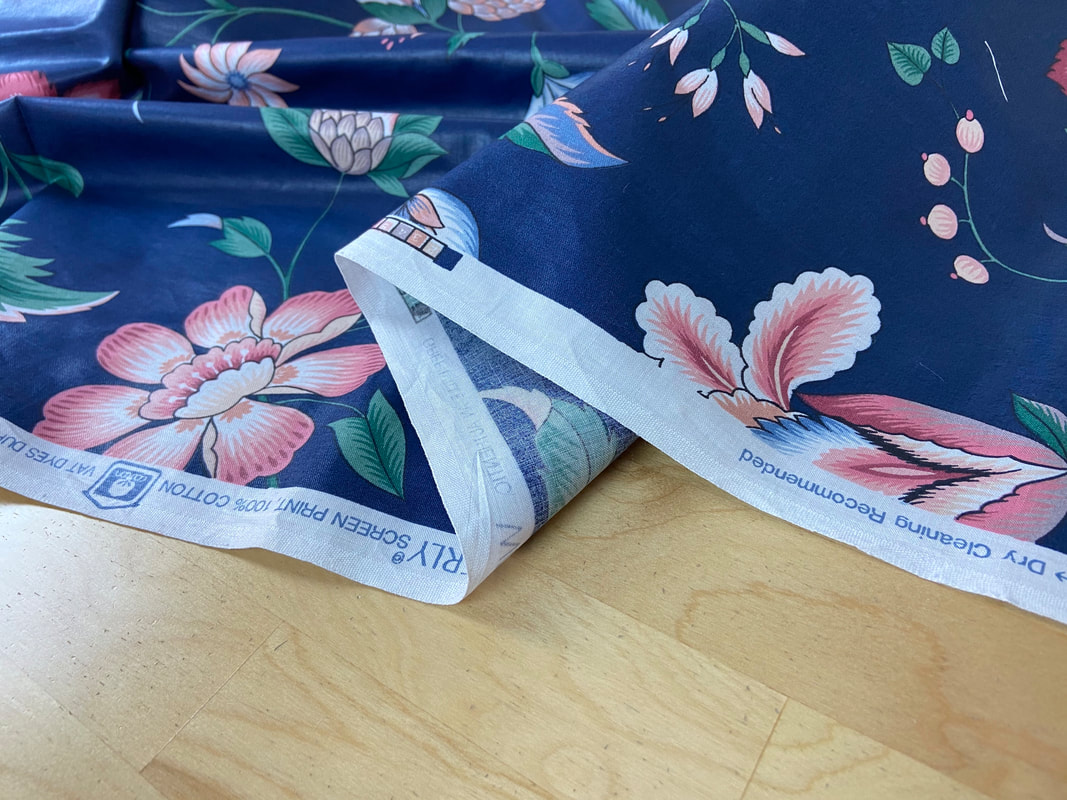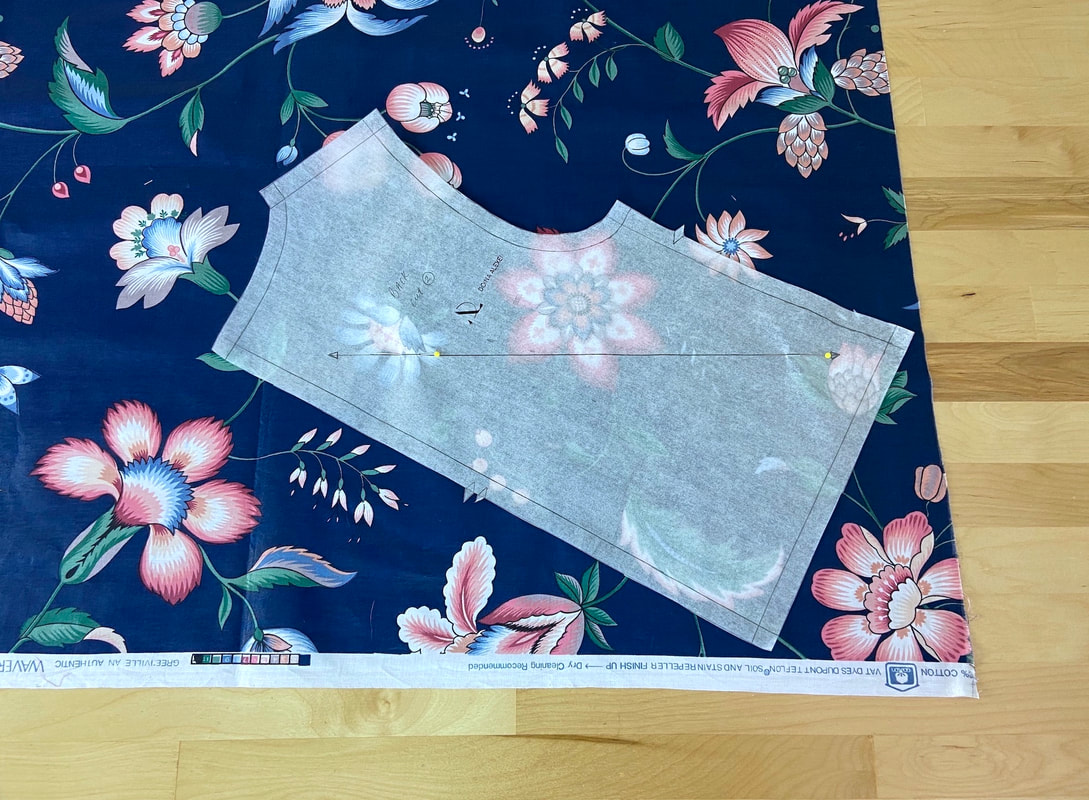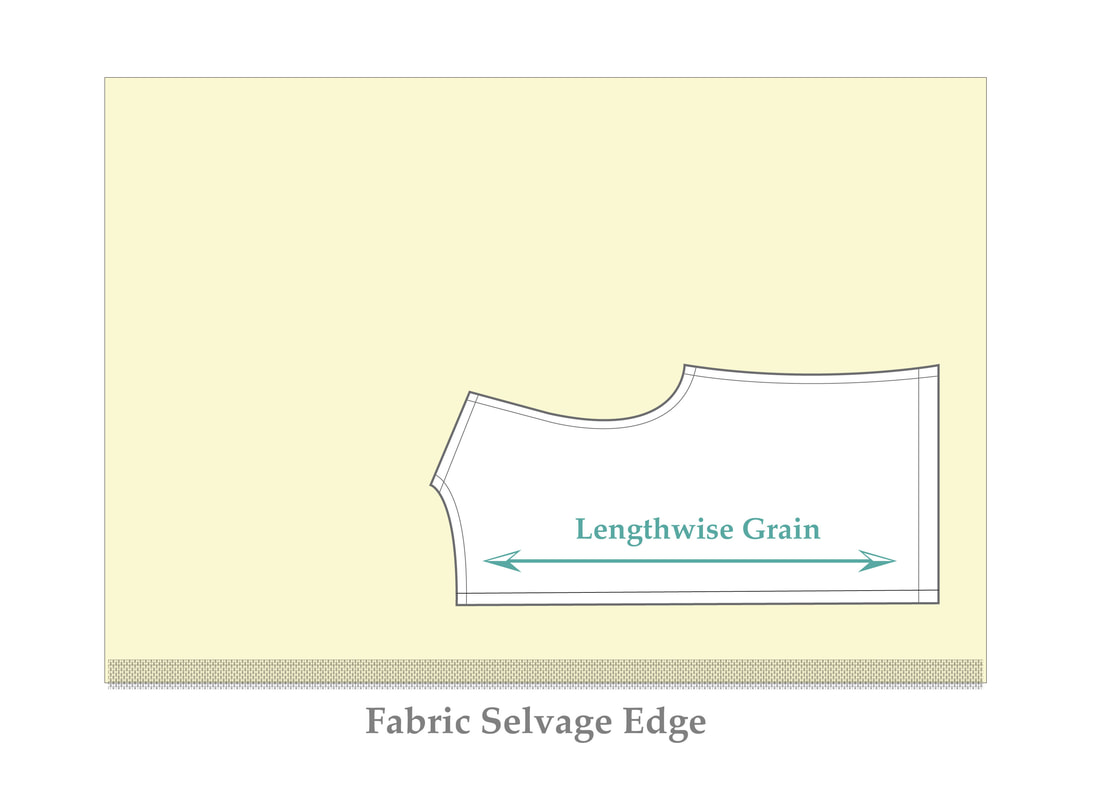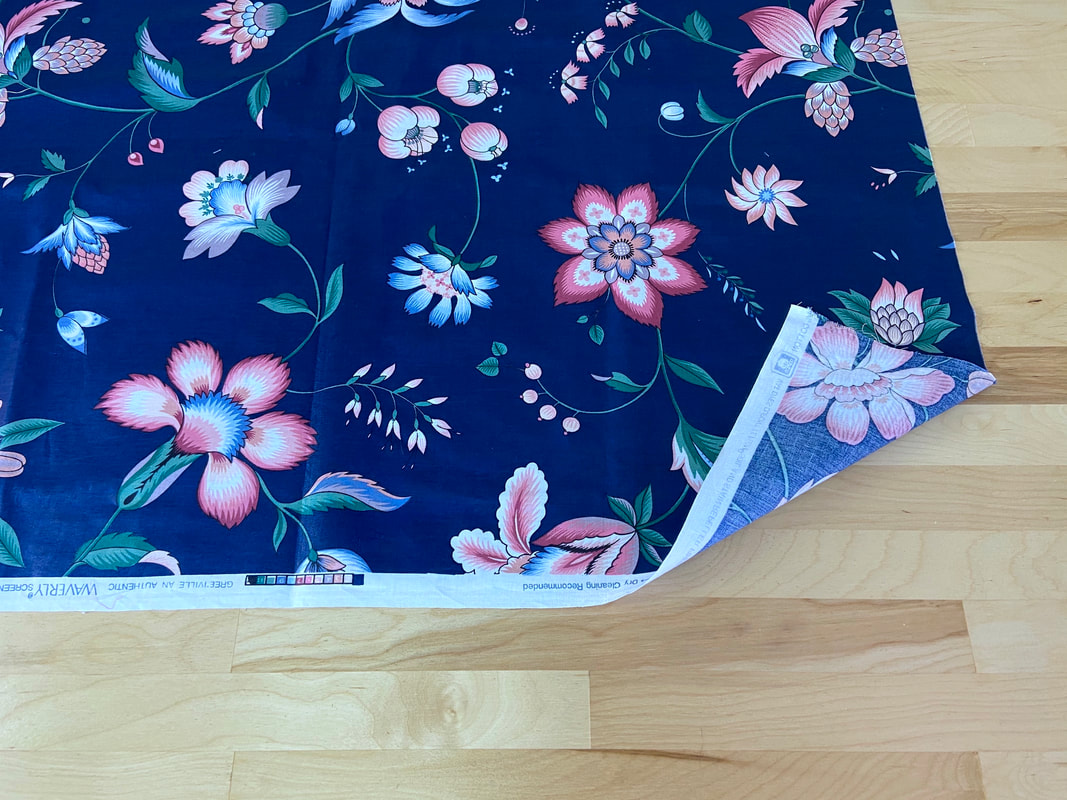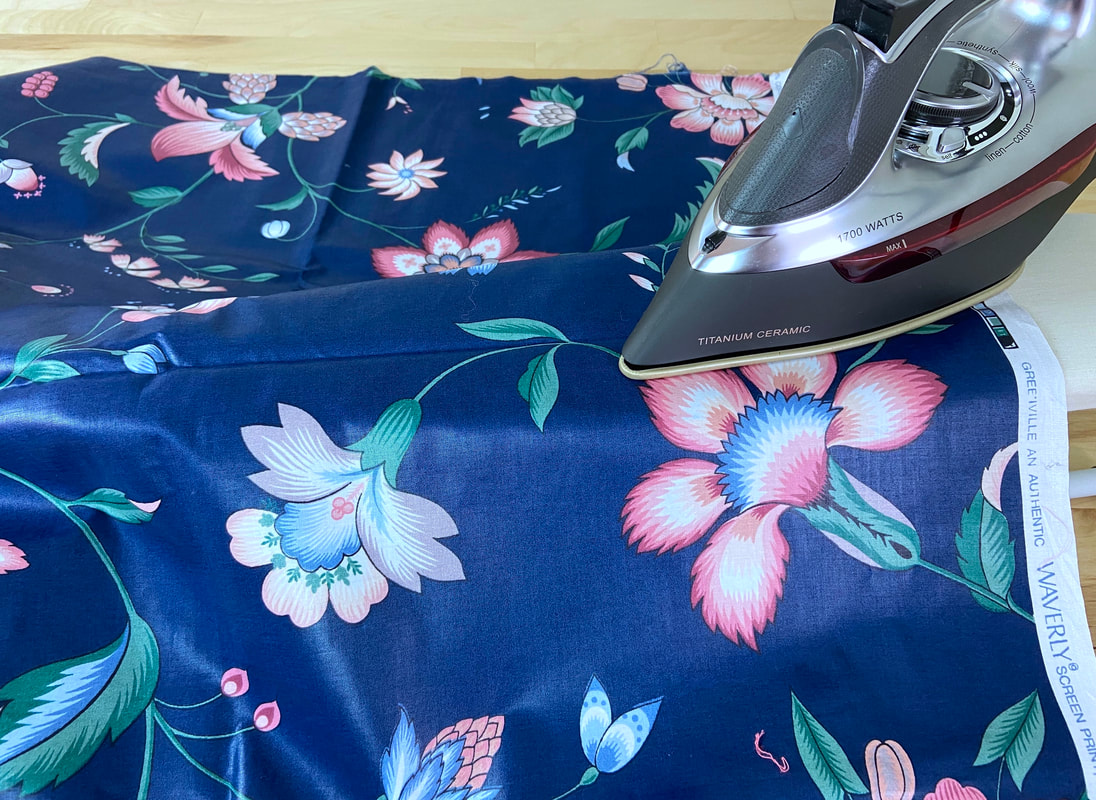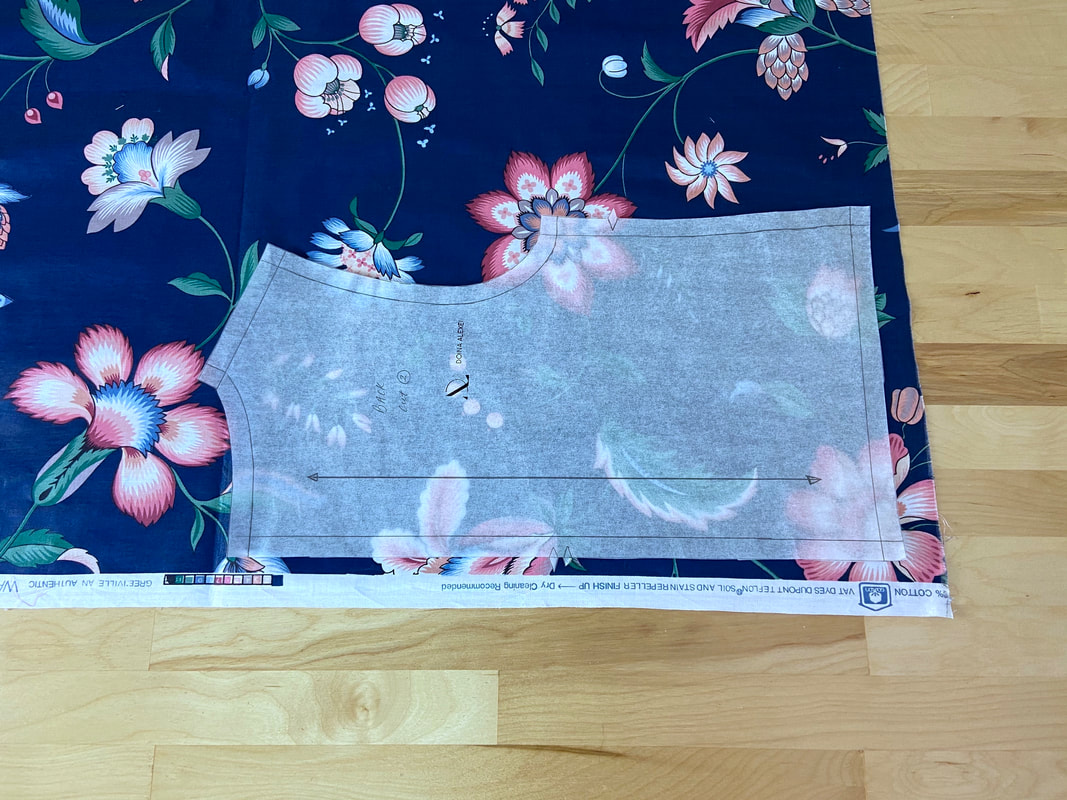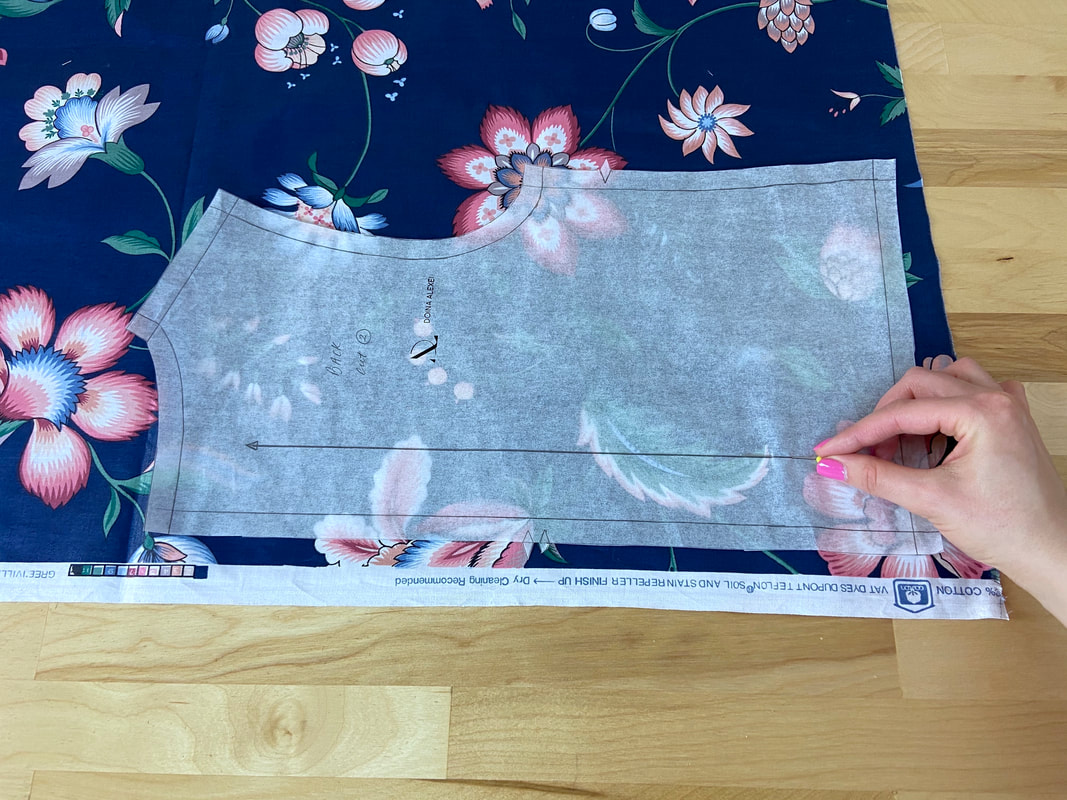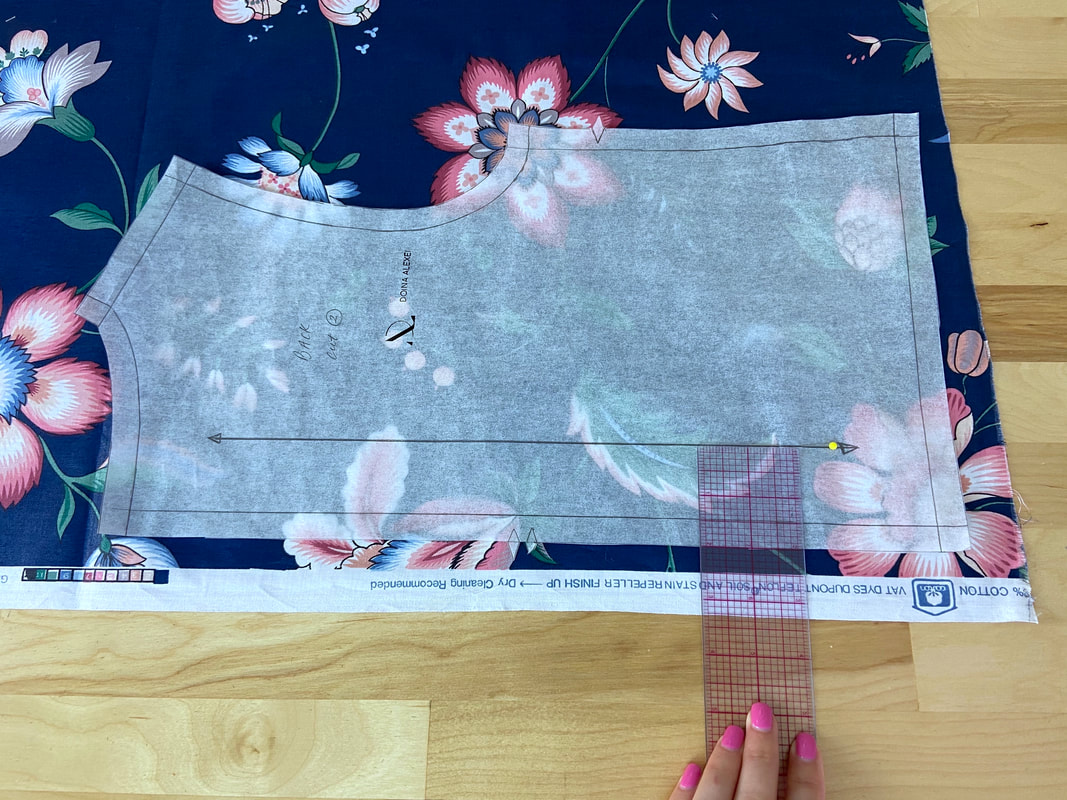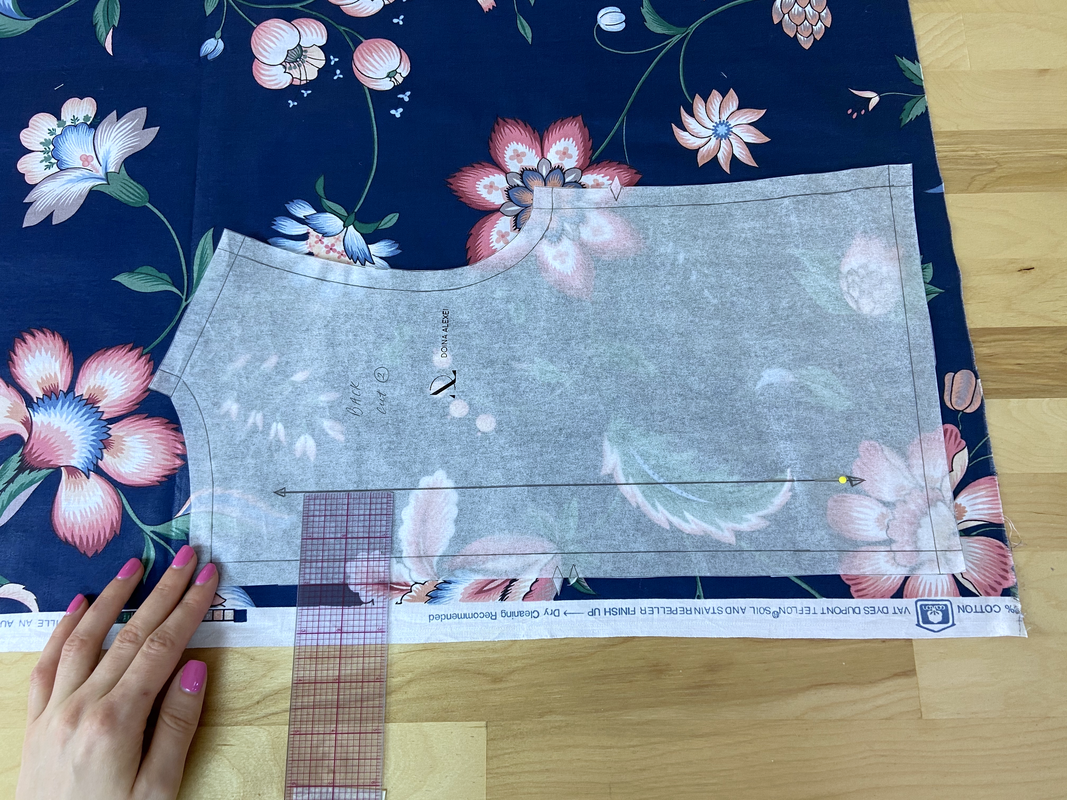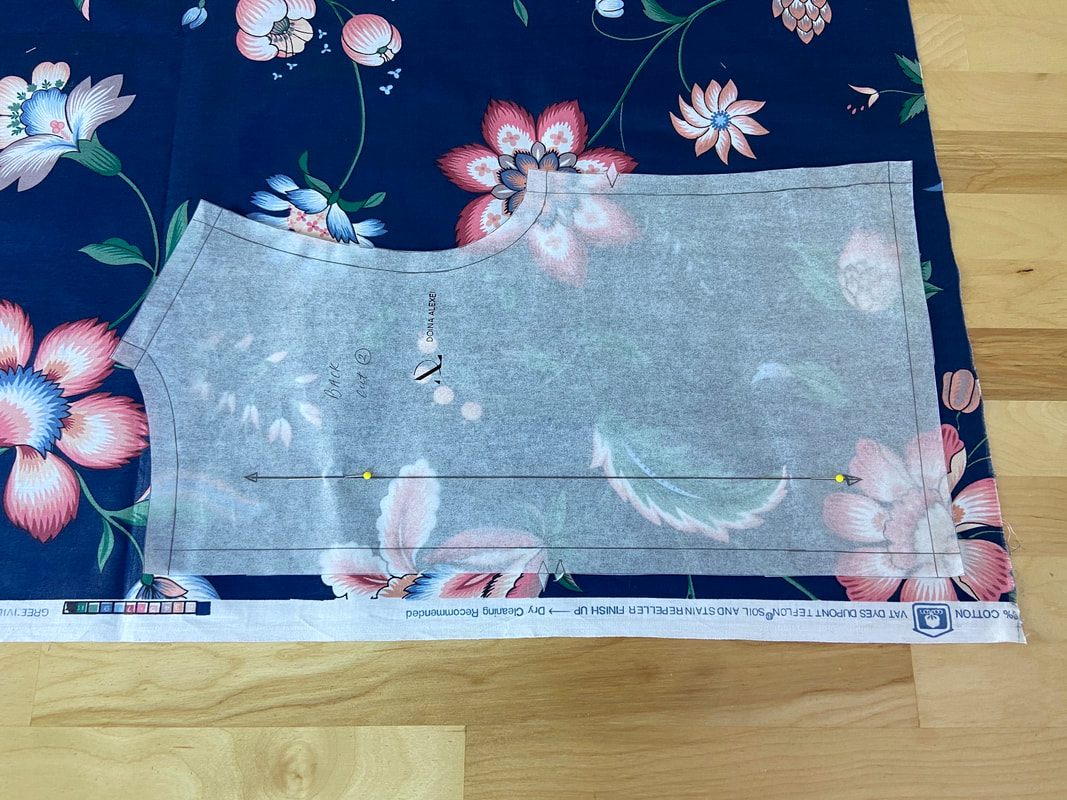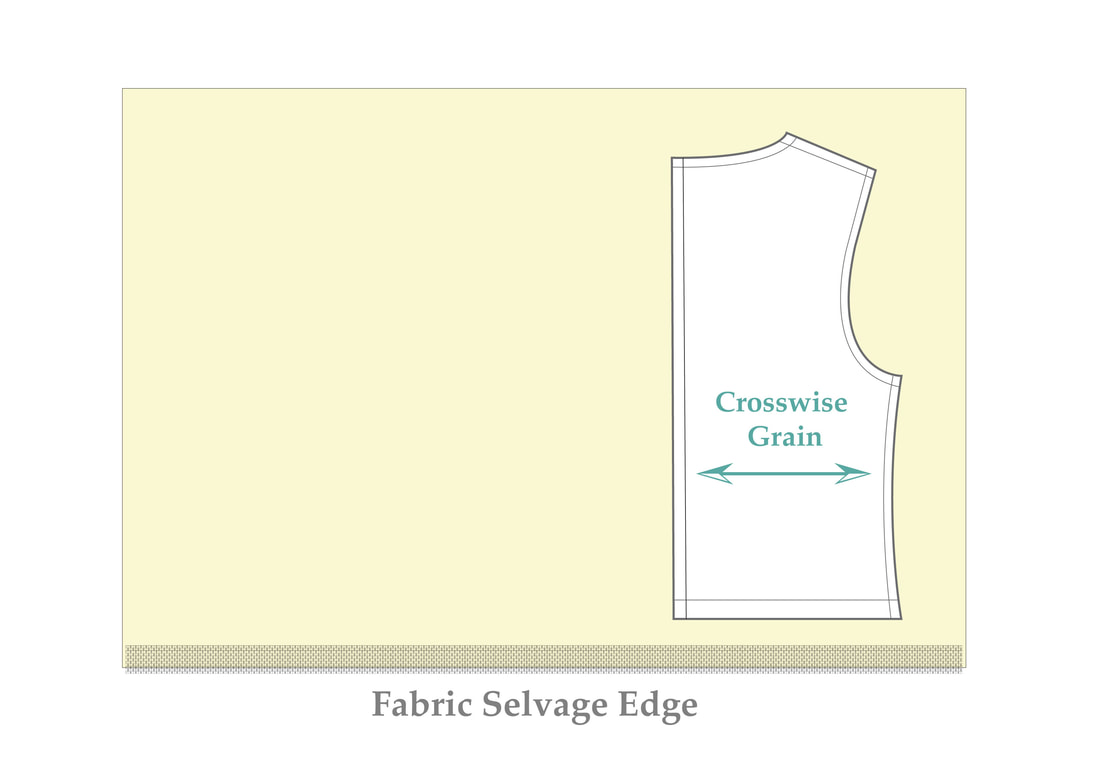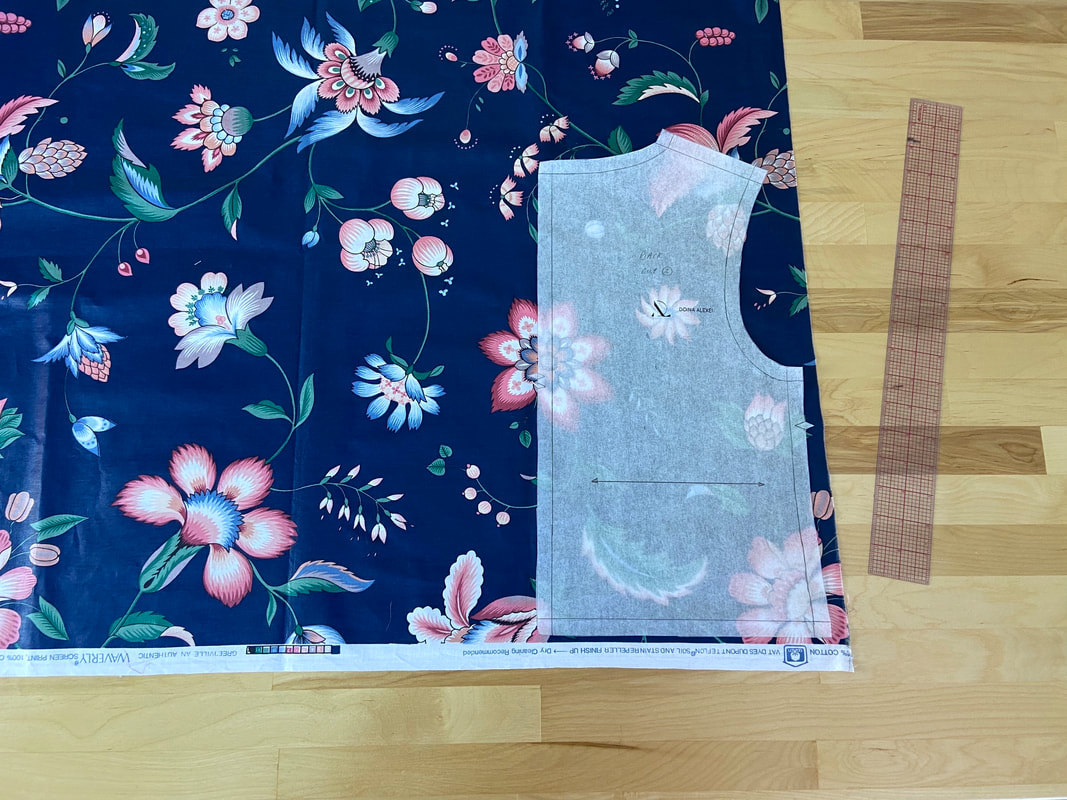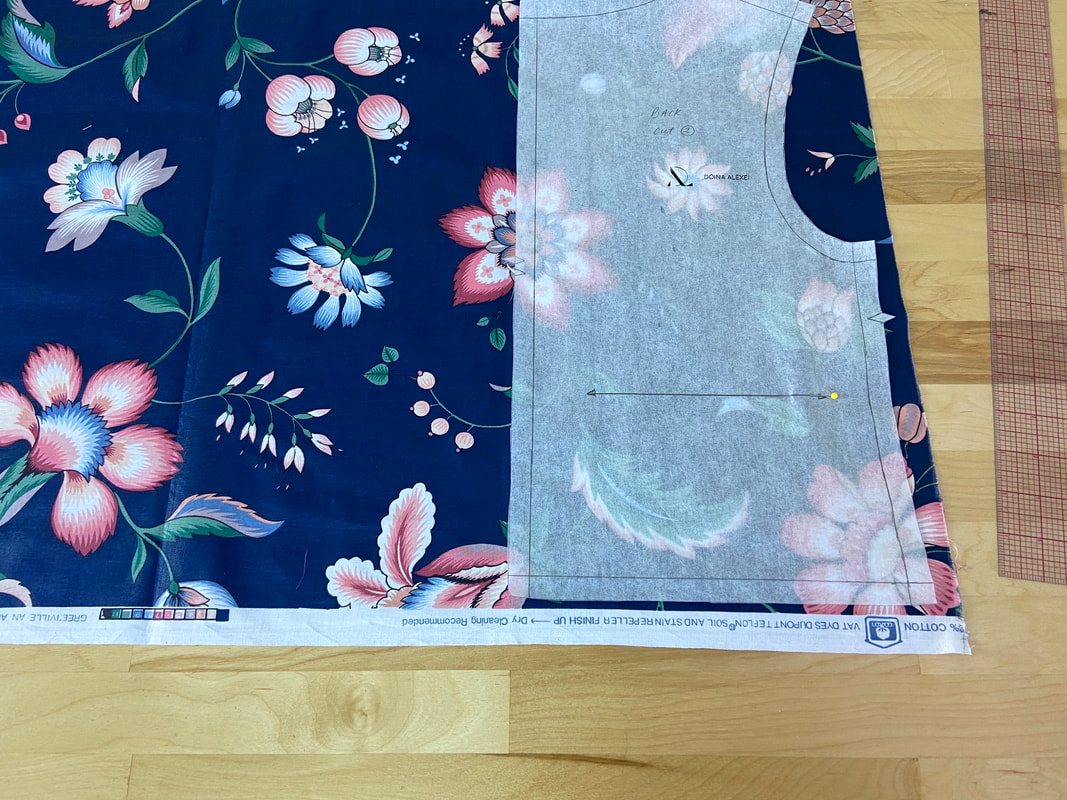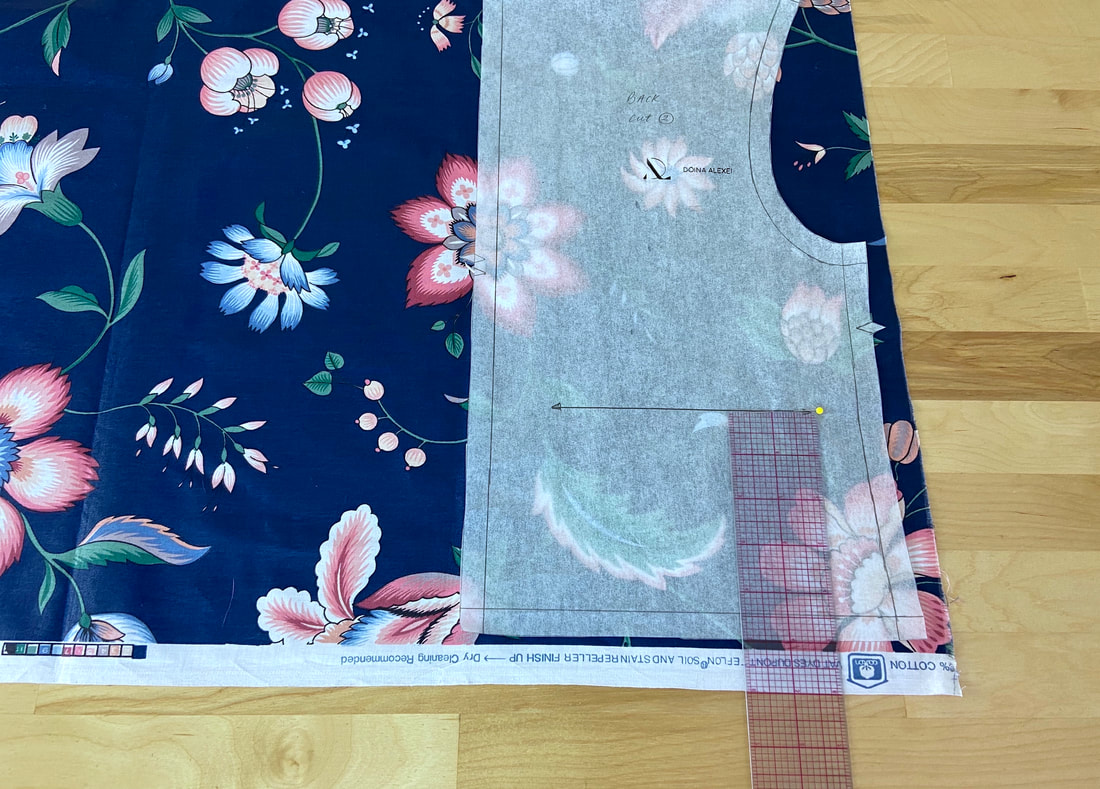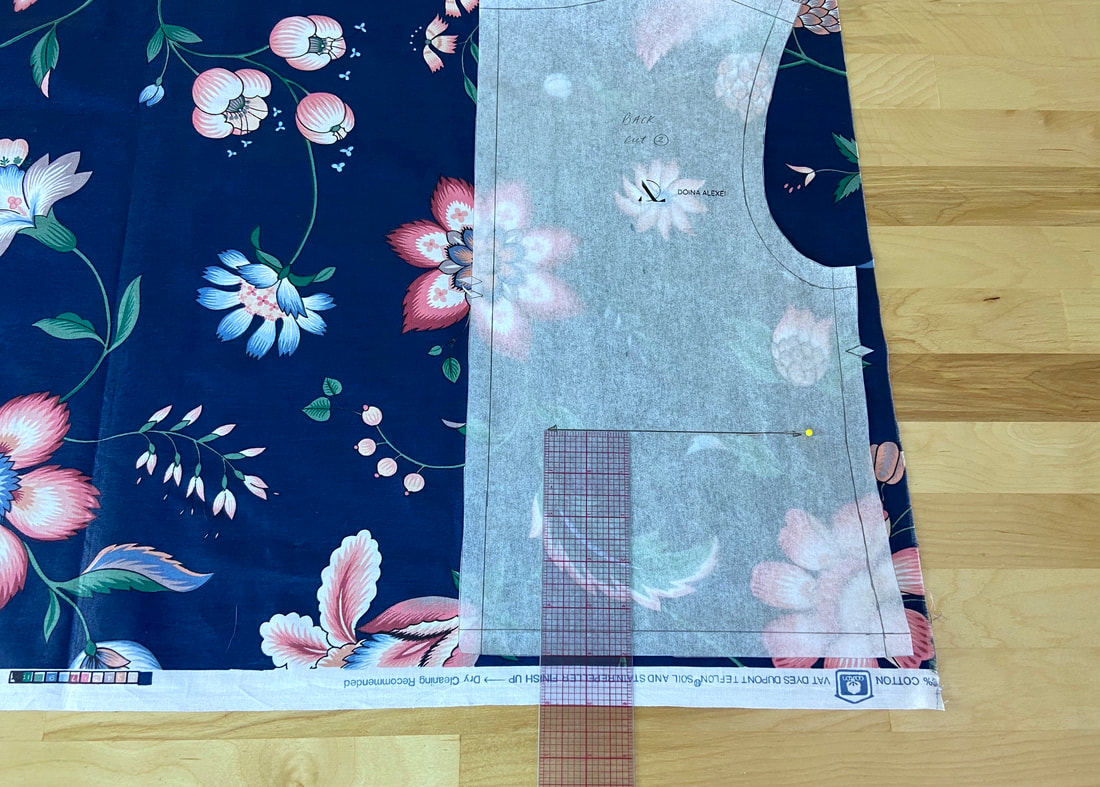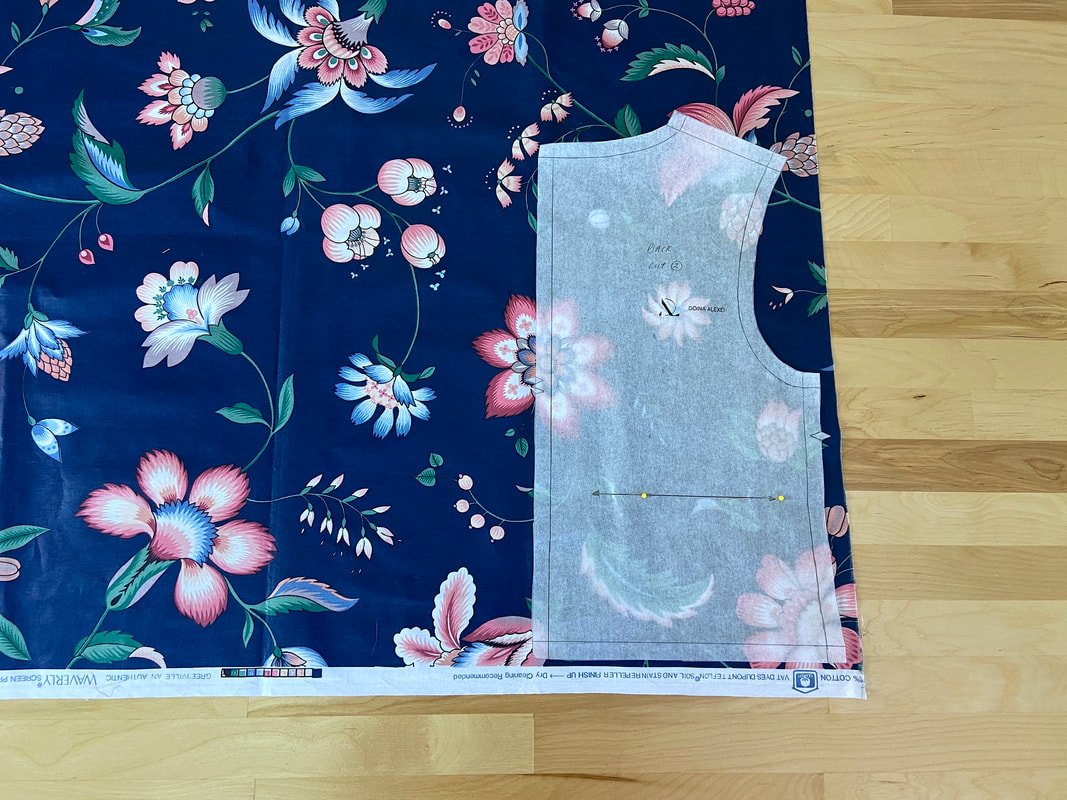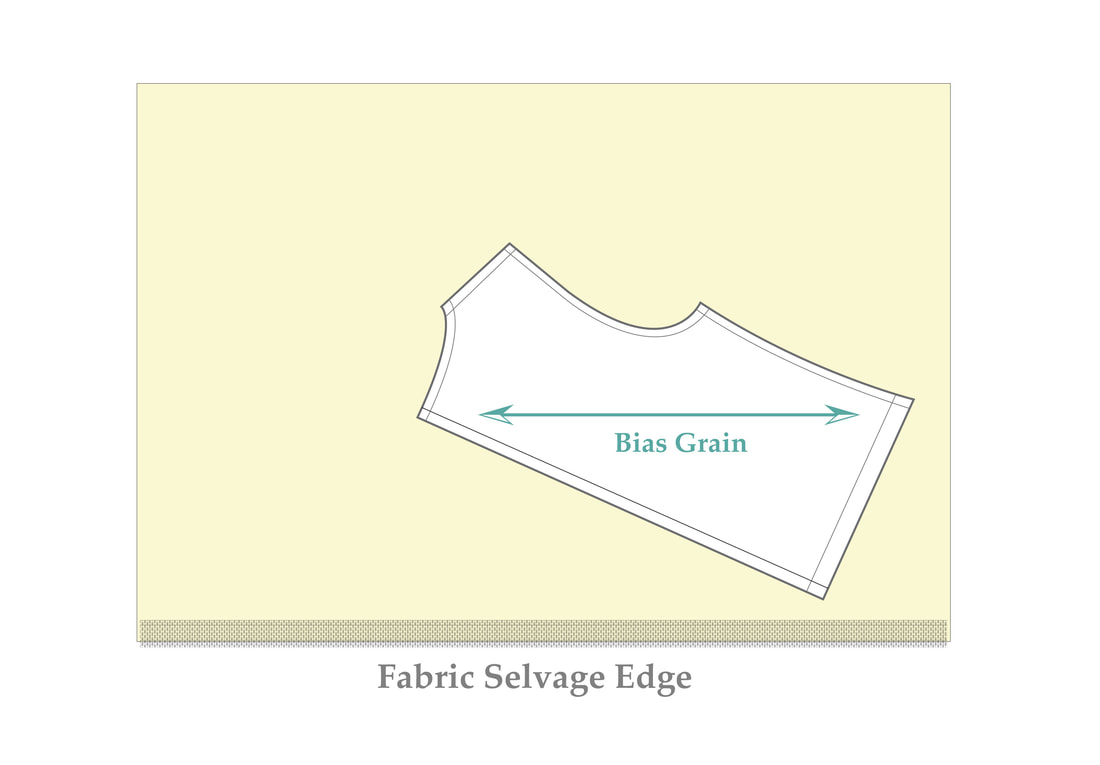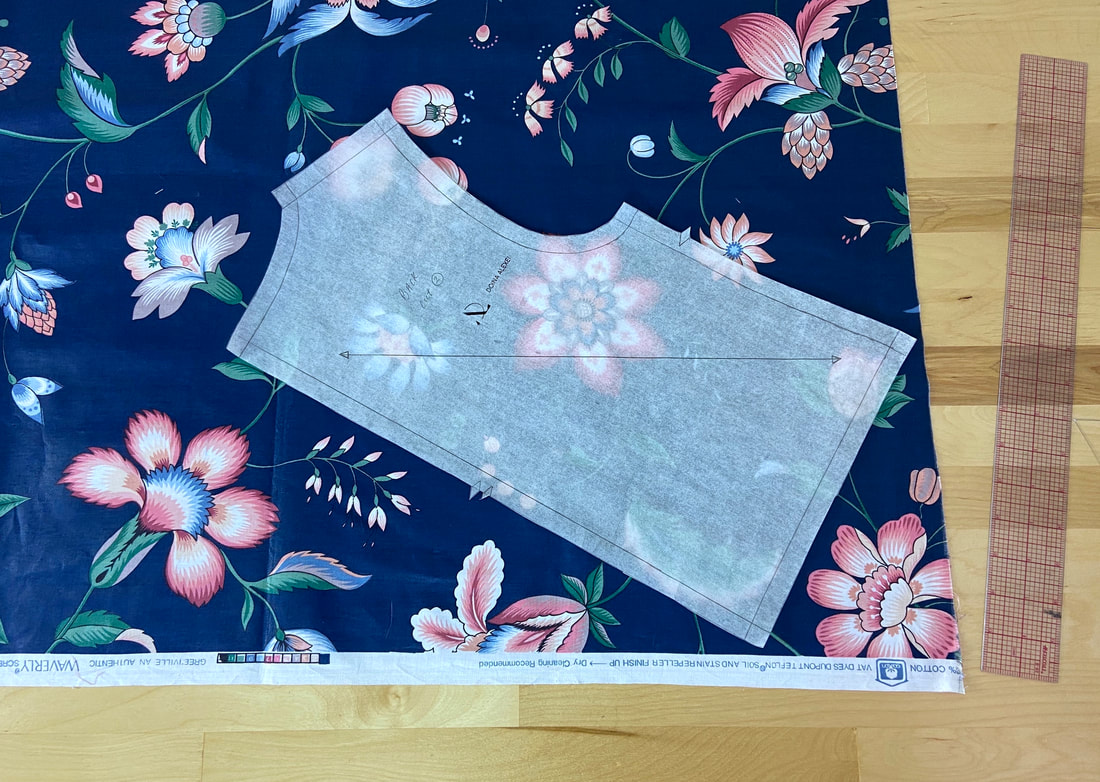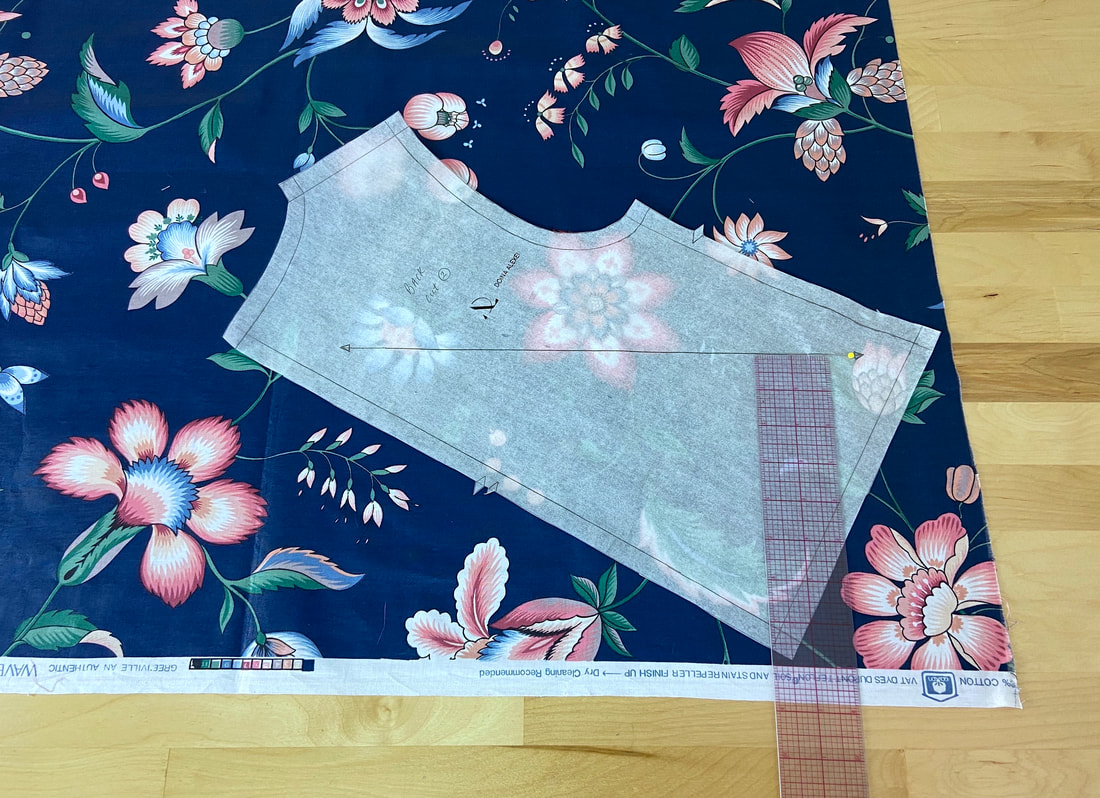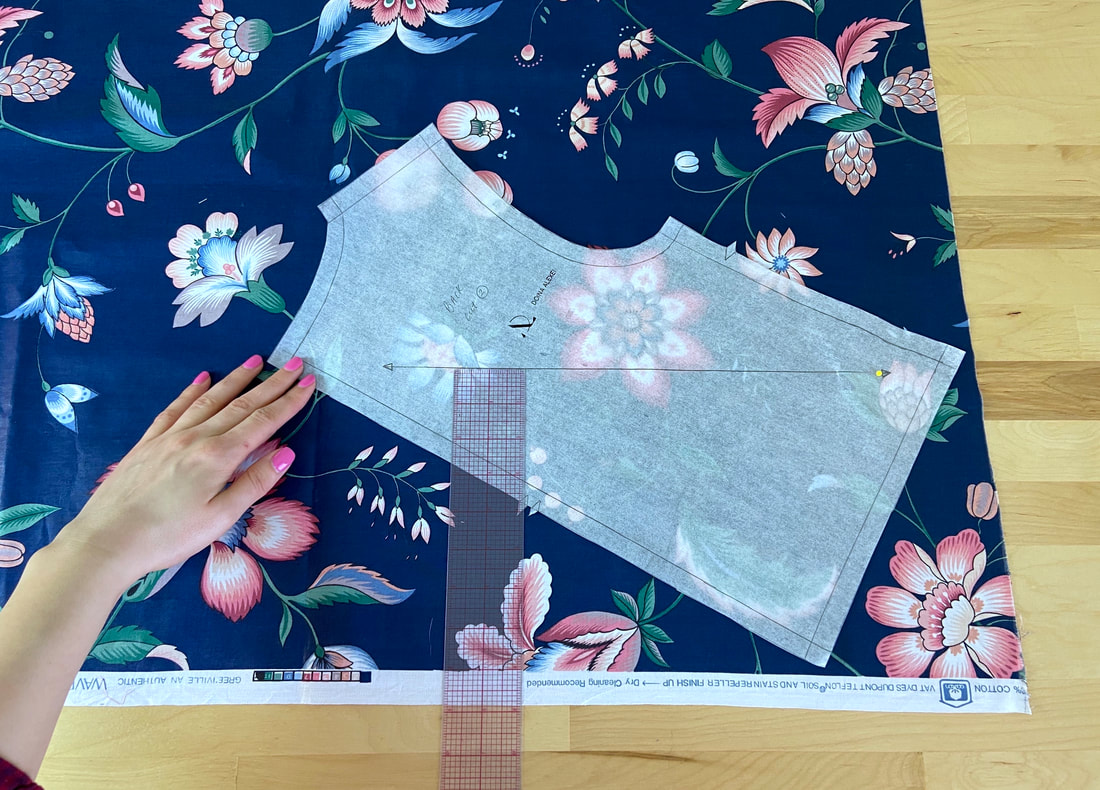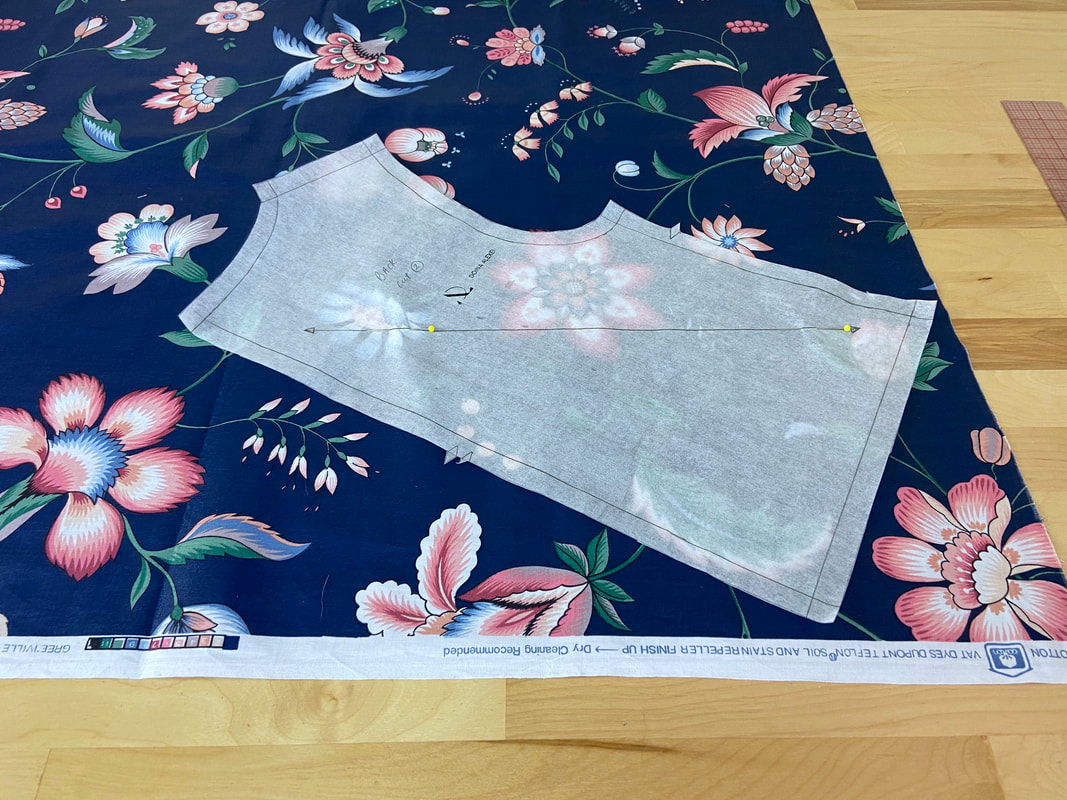Prior to cutting, patterns are aligned on fabric according to their grainlines.
What are pattern grainlines? A pattern grainline is a double pointed arrow which is placed on a sewing pattern in either vertical, horizontal or diagonal direction to denote how the pattern should be aligned in relation to the fabric’s selvage edge.
The selvage is the longer, lengthwise fabric edge usually marked with a different color, tighter weave or writing marks.
The fabric selvage edge and the pattern grainline work hand in hand to guide you in the pattern alignment process. No matter what type of grainline a pattern has, the grain arrow will always be aligned parallel to the fabric selvage edge.
The sewing pattern direction will move as a whole based on the type of grainline used.
Examples of the three types of grain alignment are described below.
A Lengthwise Grainline
- Located vertically on a sewing pattern. Vertically means from top (neck) to bottom (hem).
- Aligned parallel to the selvage edge.
- The most conventional grainline used on patterns, providing the best fit and garment durability.
- Follows the fabric’s warp threads. Warp threads are located parallel to the selvage edge.
- Aligned parallel to the selvage edge.
- The most conventional grainline used on patterns, providing the best fit and garment durability.
- Follows the fabric’s warp threads. Warp threads are located parallel to the selvage edge.
How To Correctly Place a Lengthwise Sewing Pattern On Fabric:
1. Place the fabric face up on the cutting table.
If the fabric has wrinkles or creases, make sure to iron them out before the pattern is aligned and pinned.
2. Align the pattern vertically next to the selvage edge with the pattern markings facing up. The pattern grainline should align vertically to the fabric selvage edge.
Place the pattern as close to the selvage edge as possible while making sure the grainline remains visually parallel to the selvage edge.
3. Pin the pattern to the fabric at one end of the grainline.
4. Measure with a ruler (or measuring tape) from the pinned grainline location to the edge of the selvage. Record the measurement.
5. On the unpinned end of the grainline, measure the distance recorded in Step 4, from the selvage edge, shifting the sewing pattern in the process to align the grainline with the end of the ruler.
6. Pin through the grainline at this location to keep the pattern placed perfectly parallel to the selvage edge.
A Crosswise Grainline
- The grainline is again parallel to the selvage edge but located horizontally on the pattern.
- The whole pattern however, is now perpendicular to the selvage edge.
- Follows the direction of the fabric’s weft thread.
- Provides less durability in the finished garment but features more stretch.
- The whole pattern however, is now perpendicular to the selvage edge.
- Follows the direction of the fabric’s weft thread.
- Provides less durability in the finished garment but features more stretch.
How To Align a Crosswise Grain Pattern On Fabric:
1. Lay the fabric flat on the cutting table with the face side pointing up.
2. Place the sewing pattern on top of the fabric such that the crosswise grain is parallel to the selvage edge and the direction of the actual pattern is perpendicular to the selvage edge. The pattern should be placed as close to the edges as possible to save fabric.
3. Insert a pin through the grainline on one of its ends and measure from the pin to the selvage edge. Record the measurement.
4. Measure the same recorded distance in Step 3 from the selvage edge to the other end of the grainline as shown.
5. Insert a second pin to keep the pattern aligned perfectly parallel.
A Bias or Diagonal Grainline
- Grainline is again parallel to the selvage edge but placed diagonally across the sewing pattern.
- The pattern will be positioned diagonally on the fabric.
- Provides more stretch and drape.
- It is considered a more expensive cut that uses more fabric.
- Often used in eveningwear and higher quality apparel.
- The pattern will be positioned diagonally on the fabric.
- Provides more stretch and drape.
- It is considered a more expensive cut that uses more fabric.
- Often used in eveningwear and higher quality apparel.
How To Align a Bias Grain Pattern On Fabric:
1. Lay the fabric flat on the cutting table with the face side pointing up.
2. Place the sewing pattern on top of the fabric such that the grainline is parallel to the selvage edge and the direction of the actual pattern is placed diagonally in relation to the fabric’s selvage edge.
3. Follow the same steps described above to align the grainline to the fabric’s selvage edge: Insert a pin through the grainline on one end, measure from the pin to the selvage edge and note the measurement.
4. Measure the distance from Step 3 above from the other end of the grainline to the selvage edge as shown.
5. Insert another pin at the second location on the grainline, thus keeping the pattern aligned perfectly parallel to the selvage edge.

